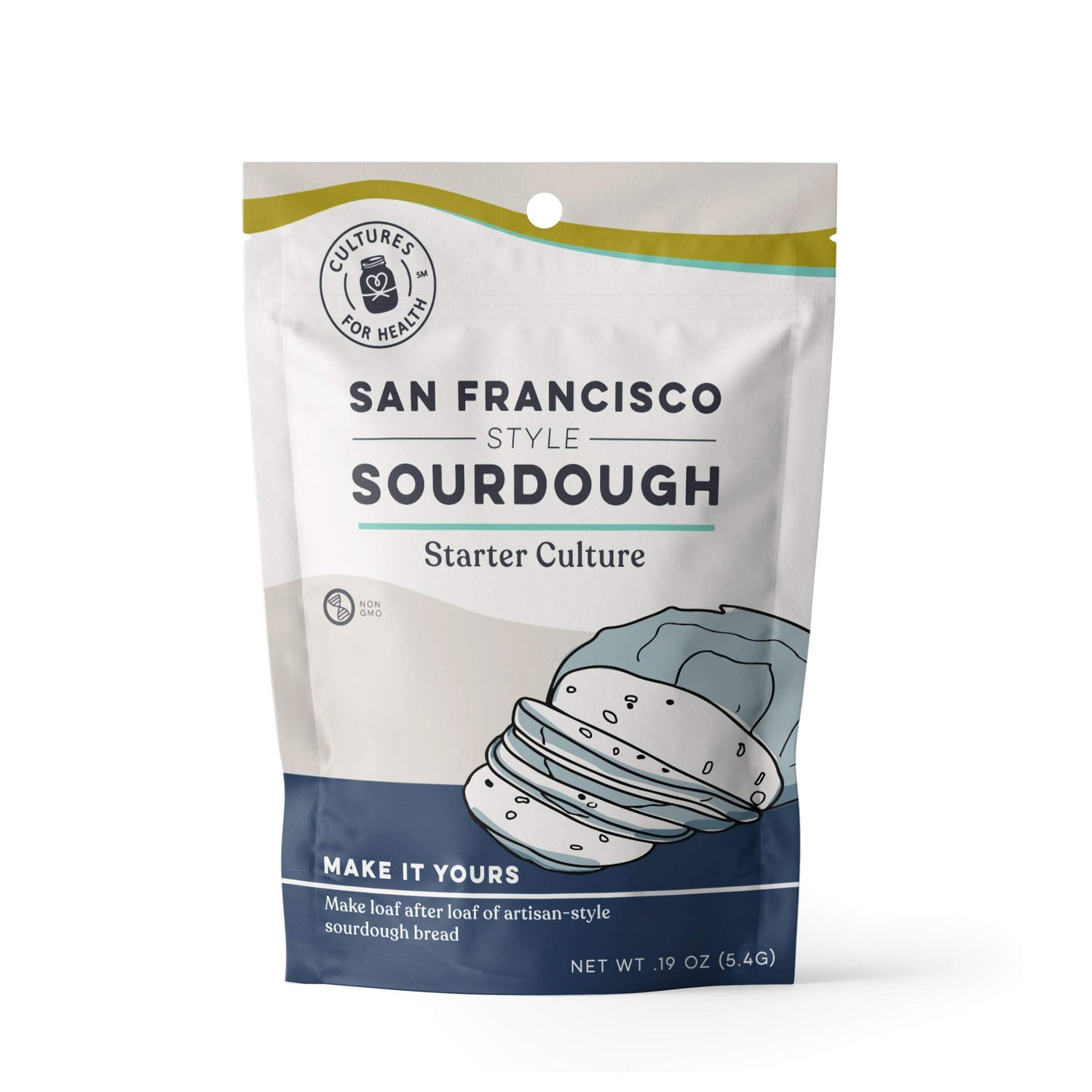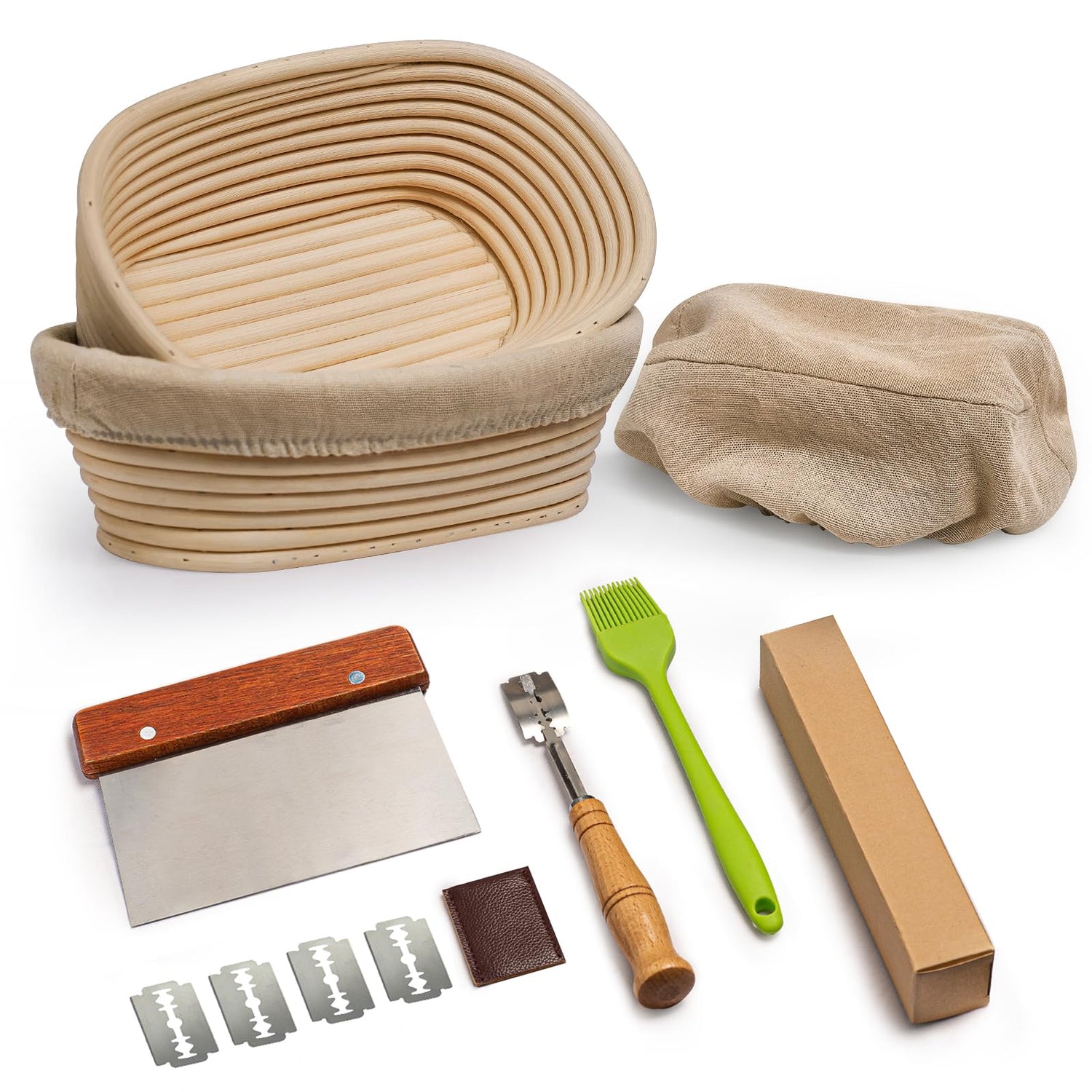Bake Sourdough Like a Pro Without the Stress or Guesswork
Transform Every Loaf into a Masterpiece with Ease
Bake Sourdough Like a Pro Without the Stress or Guesswork
Transform Every Loaf into a Masterpiece with Ease


Many hesitate to start because they worry about failure with their starter or baking a dense, unappetizing loaf.

Without the proper tools, handling sticky dough, monitoring fermentation, and managing your starter can feel messy and frustrating.

Busy schedules make it tough to balance the long fermentation times sourdough requires, leaving bakers feeling pressed for time.

Variables like flour type, humidity, and even starter activity can make it hard to replicate success from bake to bake.

Comprehensive starter kits that includes baking supplies needed.
Guides & Recipes to solve common issues with sourdough.
Curated collection of essential baking tools
I rarely write reviews but this pot is just way too beautiful! It costs a fraction of Le Creuset and has that nice color and finishes. I owned a lot of appliances from the Mueller brand over the years and they never disappointed me
I’m so excited to have this. It’s gorgeous in color and composure. It also comes with little rubber additions to help with the lid if it suits you.I’m obsessed with the Emerald one. Color is basically exactly as advertised and I think it’s just gorgeous in person.
I love my new kettle/dutch oven! It’s very heavy and just what I was looking for at a great price! It did not disappoint! If you’re looking for one of these, don’t be afraid to buy this you’ll thank me later!!
I absolutely love my Dutch oven! It’s sturdy, heats evenly, and makes everything from soups to chicken turn out amazing. The tight lid keeps everything moist and flavorful, and it’s so easy to clean. It’s a bit heavy, but that’s what makes it so durable and perfect for slow cooking. Worth every penny!
I bought this primarily to make no-knead bread and it works beautifully for that. I also cooked a delicious slow-cooked curry chicken and potatoes dish, and plan on using it for lots of fall and winter soups and chili recipes. If you bake with this at high temperatures, you may get some dark staining (see pictures). I have managed to scrub some of it off with baking soda and a magic eraser, but not all of it. A piece like this is going to pick up patina and character over its lifetime, though, so I'm okay with that. It heats evenly and the finish has help up well so far. Would definitely recommend.
I used expensive brands, but this time, I wanted something with good quality and a reasonable price. I finally found it with Muller.
This was my second Mueller Dutch oven! I ordered one a couple weeks ago to bake sourdough in and I loved it so much I got a second one. So I could make two loaves at a time in the oven. She bakes beautifully and I cooked a whole chicken in her last night for dinner! Absolutely delicious!My only complaint is the first one came with the rubber storage bumpers for the lid and my second one did not have them inside the pot when I opened the packaging. I’d really like to have those bumpers to keep it looking nice.I recommend this Dutch oven, you won’t be disappointed!
I love this Dutch Oven. It’s beautiful and bakes an amazing sourdough! The price is great for the value and my kitchens looks super cool.
I had never made a loaf of sourdough bread in my life, these pictures are my first two attempts. I think this Dutch oven, built like a tank, is just perfect.
The pot is greener than what my picture shows. Quality amazing! I absolutely love this pot! This is by far the best purchase I have made on Amazon. I feel like Amazon is either hit or miss.
I bought this Dutch oven specifically to make bread. Not only did it live up to my expectations, it surpassed them by being very well made and also very pretty.
Someone recently gave me some of her sourdough starter and I didn’t have a dutch oven, so I tried an alternate baking dish with a foil cover… that didn’t turn out too well and I wanted one of these anyway! I bought the teal one and it’s SO pretty! And made my 2nd & 3rd loaves tonight in it. They came out perfectly, with a beautiful rise and nice crisp crust! Can’t wait to try it for other recipes soon!
Can't wait to use this for Sourdough! 🍞
Was able to make the sourdough and a tasty loaf of bread.
Was able to make the sourdough and a tasty loaf of bread.

Discover Sourdough Starters Tips & Techniques Learn how to create, maintain, and...

Explore Starter Kits for Every Hobby & Skill Find the perfect starter...

Best Proofing Baskets for Perfect Sourdough & Bread Discover top rated proofing...

Home Bakers will be your hub for everything sourdough baking! Whether you’re a seasoned baker or just beginning your journey, our platform offers sourdough baking tools, recipes and practical baking tips to simplify your creations. Join a passionate community of bakers who share a love for homemade bread and beyond.

Table of Contents Signs Your Sourdough Starter Has Gone Bad Common Causes of Starter Spoilage Preventing Sourdough Starter Spoilage Reviving a Neglected Sourdough Starter Frequently Asked Questions (FAQs) 1. How...
Table of Contents Signs Your Sourdough Starter Has Gone Bad Common Causes of Starter Spoilage Preventing Sourdough Starter Spoilage Reviving a Neglected Sourdough Starter Frequently Asked Questions (FAQs) 1. How...
![How Does Sourdough Starter Work? [The Science of Sourdough Explained]](http://homebakers.org/cdn/shop/articles/Download_8.png?v=1737671624&width=533)
Inside this Article: What Is a Sourdough Starter? The Science Behind Sourdough Starter 1. Wild Yeast 2. Lactic Acid Bacteria (LAB) 3. The Role of Enzymes Maintaining a Healthy Sourdough...
Inside this Article: What Is a Sourdough Starter? The Science Behind Sourdough Starter 1. Wild Yeast 2. Lactic Acid Bacteria (LAB) 3. The Role of Enzymes Maintaining a Healthy Sourdough...

A sourdough starter is a mixture of flour and water that has been fermented to
cultivate wild yeast and bacteria. This natural leavening agent is essential
for making sourdough bread, providing it with flavor and texture.
Bread flour is recommended for superior gluten development, but all-purpose flour can also be used. Whole wheat flour adds flavor and nutrition but may require more
water due to its higher absorption rate.
To shape sourdough, gently deflate the risen dough, then stretch and fold it into
a round shape. Use a bench scraper for support, and let it rest for 20-30 minutes before final shaping to develop gluten strength.
To prevent sticking, grease your pan with oil or butter and dust it lightly with flour, or use parchment paper. For a non-stick experience, consider using silicone bakeware or a well-seasoned cast iron skillet.
Rise to the Occasion – Fresh Tips & Recipes Delivered to Your Inbox
